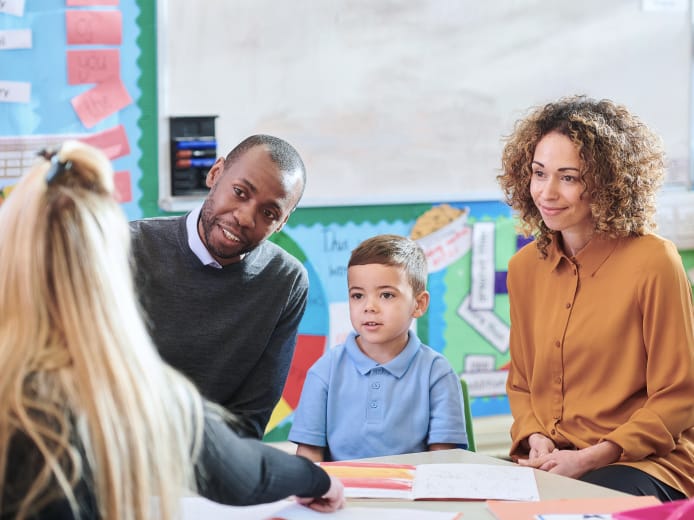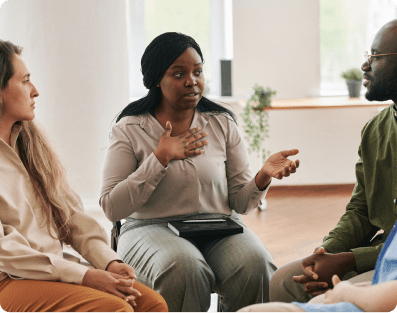Real-World Task Guidelines:
EAL Literacy
CLB FL
Education and Learning

Possible Topics
This theme may include these topic areas:
And so on
Planning Context
Learners may require the following:
- Clear photographs
- Topics that are related to immediate personal needs
- Face-to-face or one-on-one digital interactions
- Text that is single words
- Slower rates of speech
- Non-demanding contexts
Instructors may need to:
- Teach all concepts and vocabulary orally first
- Limit vocabulary to highly familiar words and phrases
- Speak slowly
- Use increased white-space, large font size, a literacy-friendly font and clear photographs
- Limit reading text to highly familiar words
- Provide extensive scaffolding and support
Comprehending Information
Understand very simple information about highly familiar, concrete topics.
- Identifies a few obvious factual details, such as numbers, letters, time and dates.
- Identifies a few key words and short expressions related to immediate needs.
Interacting with Others
Understand individual greetings, introductions and goodwill expressions. Communication is very brief, 1 or 2 short turns.
- Identifies individual, familiar words and short phrases used in common courtesy formulas.
- Indicates comprehension with appropriate verbal or non-verbal responses.
Sharing Information
Give basic personal information in response to direct questions from a supportive listener.
- Answers simple questions about personal information.
- Uses alphabet to spell out words, such as own name.
Getting Things Done
Make and respond to simple requests related to immediate personal needs.
- Uses appropriate single words, phrases, memorized expressions and courtesy formulas.
- Uses simple expressions of time.
Literacy Learner Considerations
Listening and Speaking
For listening and speaking, Foundation L learners vary in their abilities. It is important for them to build oral language related to the task or theme. This will help them understand the structure of the language, cultural- specific ways of communication, and to recognize the same language in print.
Reading
To prepare for CLB 1L reading tasks, Foundation L learners can work towards foundation reading skills, in the context of real-world tasks, such as:
- developing oral vocabulary related to the task or text
- recognizing letters of the alphabet
- connecting letters and corresponding sounds
- attending to first sound when learning new oral vocabulary
- attending to the first letter and corresponding sound when locating a familiar word
- recognizing numbers 1-10
- recognizing date and date of birth formats
- recognizing their own name in print
- recognizing a few common sight words related to the task
Writing
To prepare for CLB 1L writing tasks, Foundation L learners can work towards foundational writing skills, in the context of real world tasks, such as:
- developing oral vocabulary related to the task or text
- gripping a pen or pencil effectively
- forming the letters of own name legibly, and orally spelling own name
- using letter counting to check accuracy while copying
- forming capital and lowercase letters from a model
- creating a reference card with personal identification information
- forming numbers 1-10
- tracing and copying words
- labeling a picture or diagram
- filling in missing first letter of a dictated familiar word related to the task
- attending to the first sound when attempting to write words
Additional Sample Real-World Tasks and Competency Areas
Listen to 2-3 word common classroom instructions, like sit down, open your book and so on. (Comprehending Instructions)
Greet a classmate and say where you are from. (Interacting with Others)
Read 2-3 highly familiar common classroom words like pencil, eraser and binder.
Copy 2-3 highly familiar words in a guided text about learning English.
Additional Resources
Digital Literacy Strategies
Successful completion of some tasks may require some baseline digital knowledge and skills.
Learners may need to:
- Look at a website.
Instructors can:
- Introduce websites that are relevant to the task(s).
- Support learners in finding, navigating and using websites.


Equity, Diversity and Inclusion Strategies
Instructors Can:
- Use diverse representations of people in all learning resources and images, including people who are 2SLGBTQIA+, Indigenous, Francophone and of other cultures, and people who have disabilities or who are neurodivergent.
- Recognize that learners with disabilities and learners who are neurodivergent may need accommodations in the workplace; when possible, help learners of all abilities understand their rights in the workplace.
Trauma-Informed Strategies
Triggers:
- Many activities in a school environment, such as assessments, answering questions from an instructor or someone in authority, public speaking and interacting with strangers, can be triggers for trauma.
Strategies:
- Learners who have experienced trauma often benefit from having routine.
- Learners who have experienced trauma benefit from having choices.
- Learners have the right to choose if, when and what they share about themselves.

Sample Real World Tasks
This information is aligned with the Canadian Language Benchmarks (CLB) and is designed to help guide you in the planning process. You can use these sample real-world tasks to guide and inform your selection or creation of skill-building activities, skill-using tasks and assessment tasks.
These sample real-world tasks include the following: skill, real-world task, competency area, one competency statement and two sample indicators of ability. This is not an exhaustive list: there are more indicators of ability and information about this CLB level in Canadian Language Benchmarks English as a Second Language for Adults. Consult this resource for more information and to select your own competencies or indicators of ability. Remember, you can use more learner-friendly language in your materials and assessments.
This is NOT a lesson plan, module plan or curriculum.

